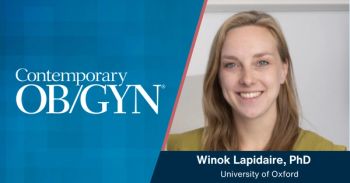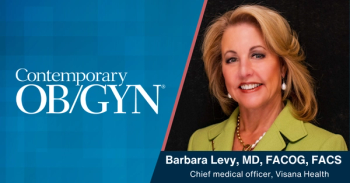Relugolix combination therapy (CT) provides long-term safety and efficacy in patients with severe endometriosis, according to a recent study published in Human Reproduction.
Takeaways
- The study affirms that Relugolix CT, a non-peptide GnRH receptor antagonist, provides sustained safety and efficacy over a period of up to 2 years in managing severe endometriosis.
- Endometriosis affects approximately 10% of women, causing menstrual and non-menstrual pain, infertility, and dyspareunia. Current treatment methods, including surgery and pharmacologic suppression, may result in persistent or recurrent symptoms.
- The study highlights the need for an oral therapy that reduces pain and is safe for long-term use, as existing options, such as GnRH agonists and antagonists, are associated with decreased bone mineral density.
- Relugolix CT consists of 40 mg relugolix, 1 mg estradiol, and 0.5 mg norethisterone acetate taken orally once daily. Short-term data indicates efficacy and safety in managing severe endometriosis.
- The 104-week study involving 681 patients reveals high compliance, with 98.7% and 98.8% reporting drug compliance. Responder rates for dysmenorrhea and non-menstrual pelvic pain were consistently favorable at weeks 52 and 104. Long-term safety data did not reveal new trends, with a low incidence of serious adverse events and stable bone mineral density over the study period.
Approximately 10% of women are impacted by endometriosis, which presents as menstrual and non-menstrual pain, infertility, and dyspareunia. Surgical removal and pharmacologic suppression of lesions is often utilized to treat patients with endometriosis, but these methods sometimes lead to persistent or recurrent symptoms.
Pain management is often accomplished with oral contraceptives, progestines, and sometimes androgens. GnRH agonists and antagonists may also be utilized, but these therapies are associated with decreased bone mineral density (BMD). This indicates a need for an oral therapy that reduces pain and is safe for long-term use.
Relugolix is a non-peptide GnRH receptor antagonist that prevents binding of endogenous GnRH through the production of varianoestradiol and progesterone. Relugolix CT includes 40 mg relugolix, 1 mg oestradiol, and 0.5 mg norethisterone acetate, and is taken orally once per day. Data has indicated short term efficacy and safety for managing severe endometriosis.
To determine the safety and efficacy of relugolix for up to 2 years, investigators conducted a multinational, open-label, single-arm, long-term efficacy, and safety extension study. Participants included women aged 18 to 50 years with moderate to severe dysmenorrhea and non-menstrual pelvic pain (NMPP).
Dysmenorrhea and NMPP were determined using baseline Numerical Rating Scale (NRS) scores. Participants received the study drug on days 1 to 14 of the menstrual cycle, with administration occurring during a fasted state in the morning. The use of non-hormonal contraception was required, and patients had to report a negative pregnancy test at baseline.
Oral relugolix CT was provided for up to 80 weeks. The proportion of dysmenorrhea and NMPP responders at week 52 and 104 or end of treatment (EOT) were measured as the primary outcomes of the analysis.
Daily NRS scores were used to measure efficacy outcomes.Adverse events (AEs) and endometrial biopsies were the safety outcomes of the analysis, as well as mammograms in patients aged over 40 years.
There were 681 patients with 52 weeks of treatment and 501 with 104 weeks of treatment analyzed. Study drug compliance was reported in 98.7% and 98.8% of these patients, respectively. Of participants, 8.2% reported AEs leading to discontinuation and 2% discontinued because of a lack of efficacy.
Patients were aged a mean 34 years, and 92% were White, one-third received an endometriosis diagnosis 5 or more years before the study, and 84% had received previous surgical interventions for endometriosis.
The dysmenorrhea responder definition was reported in 83.8% of the relugolix CT group at 52 weeks and the NMPP responder definition in 73.6%. At week 104 or EOT, these rates were 84.8% and 75.8%, respectively.
Responder rates at week 104 or EOT for the placebo to relugolix CT group were 80.4% and 73.1%, respectively. Similar rates were also reported in the delayed relugolix CT group.
The mean dysmenorrhea NRS score in the relugolix CT group was 7.4 at baseline. This score decreased to 1.2 at week 52 and remained stable until week 104, indicating a reduction of 84%. For the mean NMPP NRS score, a reduction from 5.9 at baseline to 2.2 at week 52 and 1.8 at week 104 was observed.
Long-term safety data did not reveal new safety trends. An AE was reported in 93.1% of women across the 104-week study period, but only 10.8% of patients reported grade 3 or higher events and only 4% serious AEs.
The rates of serious or non-serious AEs did not disproportionately increase between week 24 and week 104. Additionally, the small mean decrease in bone mineral density observed at week 24 did not increase by week 104.
These results indicated safety and efficacy from relugolix CT in managing severe endometriosis. Investigators recommended further research about long-term medical control of endometriosis symptoms.
Reference
Christian M Becker, Neil P Johnson, Sawsan As-Sanie, et al. Two-year efficacy and safety of relugolix combination therapy in women with endometriosis-associated pain: SPIRIT open-label extension study. Human Reproduction. 2024. doi:10.1093/humrep/dead263











